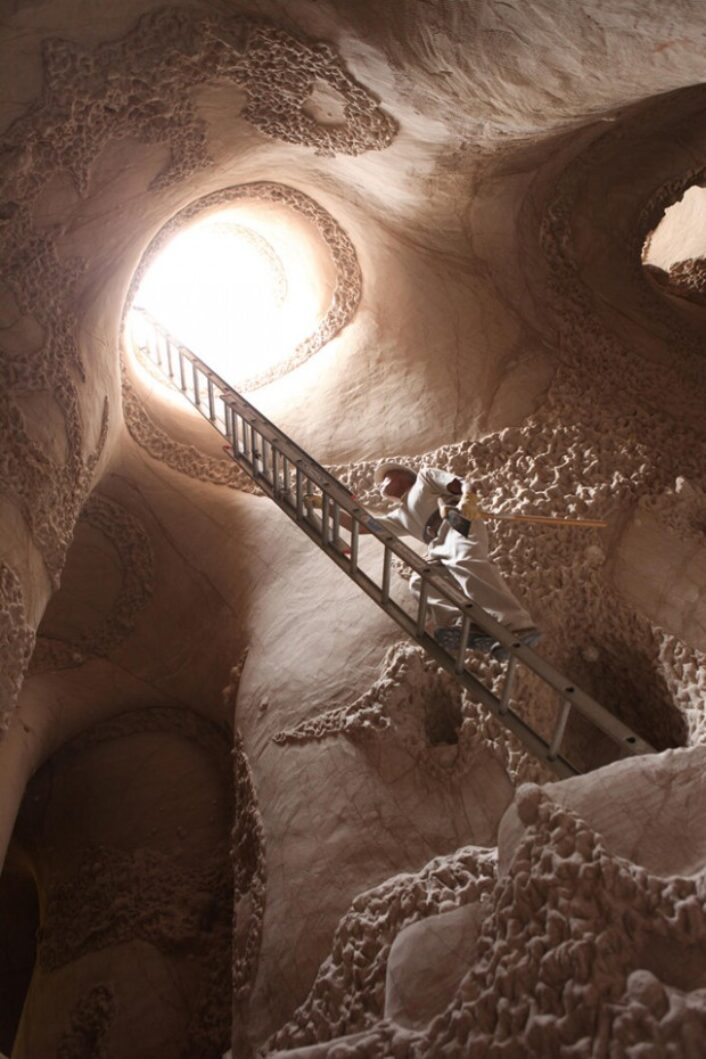Culture
“Star Axis” in progress for the last 50 years
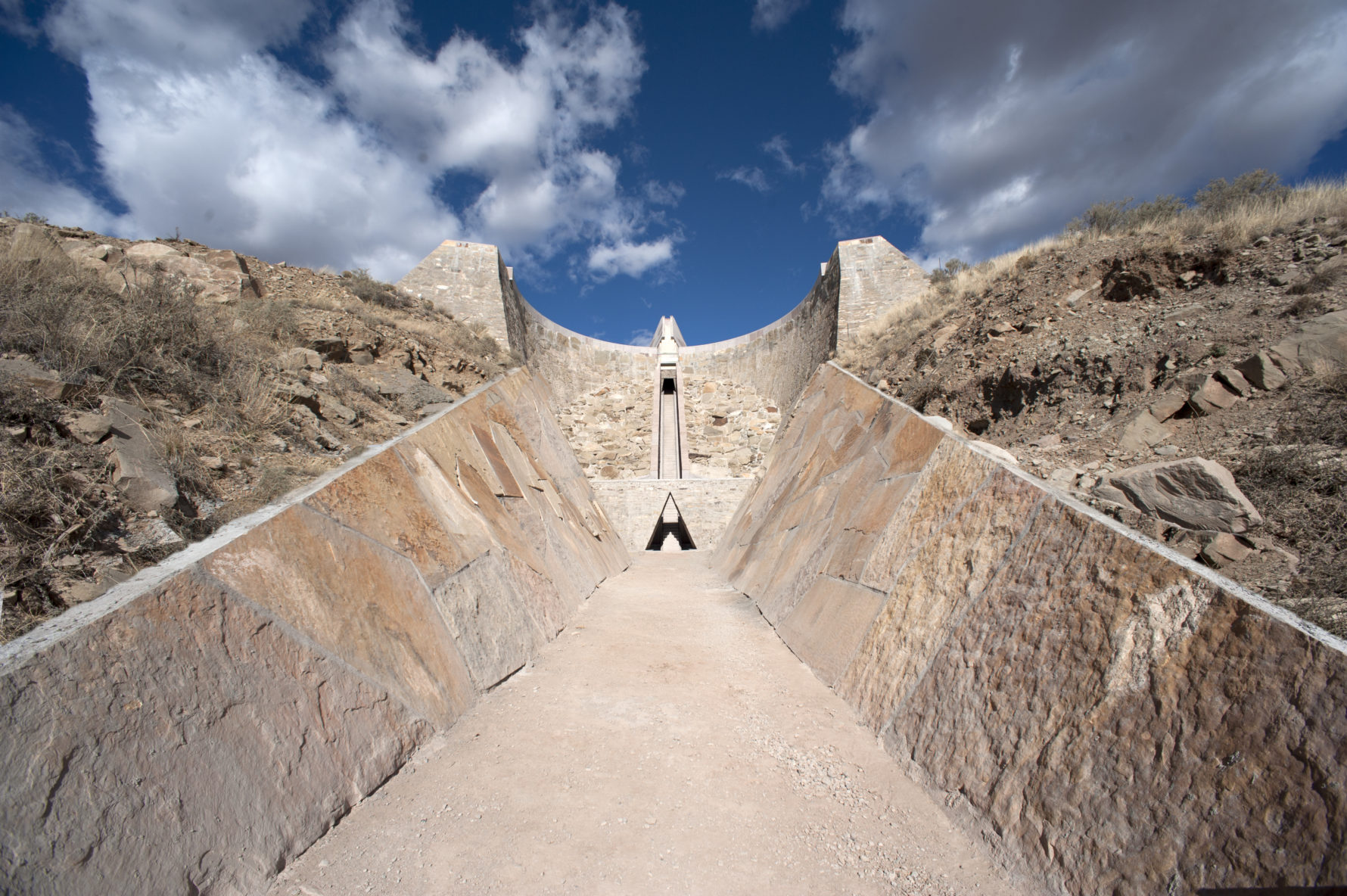
The entrance to “Star Axis” is a 30-foot-high stone wall that was built using ancient techniques.
Image courtesy of: Charles Ross Studio, photographed by: Andres Gonzalez
For almost fifty years, the earthwork called Star Axis has been a work-in-progress. Located in the New Mexico desert, this is the brainchild of Charles Ross, a well-known New York multi-media artist. The 82- year-old artist is a student of math and sculpture, having graduated from the University of California, Berkley in the mid-1960’s. Thus, it seems logical that Ross decided to create a work that embodies one of the world’s most unusual astronomical phenomenons.
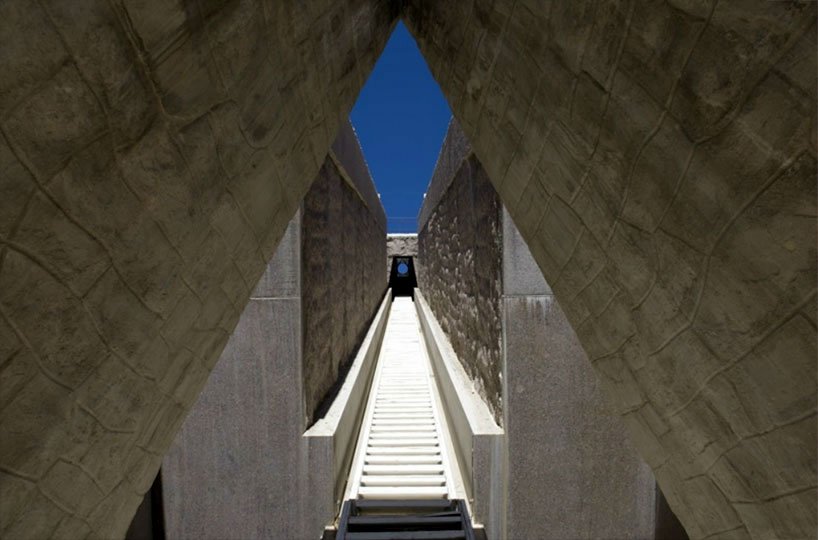
A view taken standing under the equatorial chamber, looking up to the star tunnel through the orbital lens at the very top.
About his structure, Ross says, “The piece should rise up out of the land not be imposed on it.”
Image courtesy of: Design Boom
Picking the perfect spot for his earthwork enlisted a four-year search through the southwest. The site chosen is a mesa where someone literally stands at the boundary between the sky and the earth. “Star Axis” is an astronomical phenomenon called “precession.” This was first recorded by Hipparchus around 130 B.C. The Greek astronomer referred to precession as the tilting of the earth’s axis due to the sun’s gravitational pull on the engorged equator. What Ross constructed is actually the ability to “walk through time.”
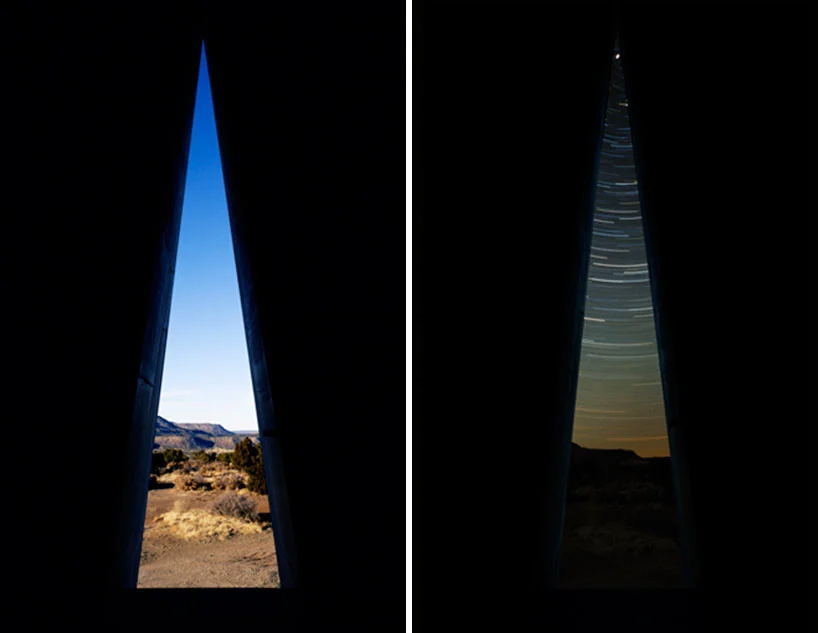
The view through the “hour chamber.” Polaris is located at the upper-most point of the triangular opening. All the other stars take exactly one hour to pass from the left wall to the right one.
Currently, Polaris is the closest bright star to the northern celestial pole; however, that changes over time. This cycle takes 26,000 years.
Image courtesy of: Design Boom
The structure, located in the New Mexico desert, is both science and sculpture… and a naked-eye observatory. The idea behind building Star Axis involved gathering a variety of star alignments in different time frames and translating them into a sculptural form.
Walking through the chambers, you can get a real feel for how star space relates to human scale. This complicated sense of astronomy is reminiscent of Egypt’s ancient pyramids. Stretching eleven stories high, the structure consists of five primary features: two chambers, a 147-step stairway, a pyramid, and the adjacent “shadow” field across the pyramid’s outline that moves along with the desert light. The exact calibration of the interconnected components allows visitors to explore the relationship between celestial movement and time.
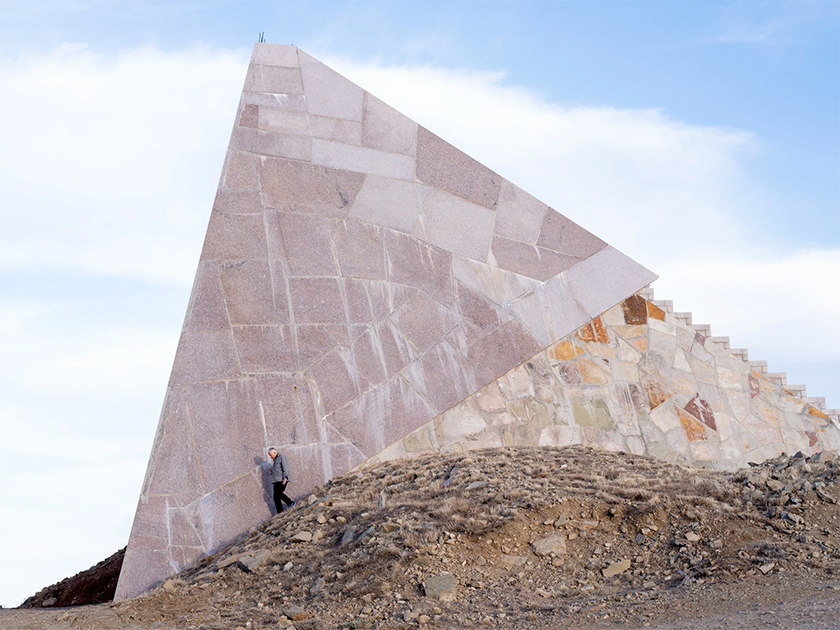
Charles Ross at the base of the Solar Pyramid which forms the top of the “naked-eye” observatory.
Image courtesy of: The New York Times Style Magazines, photographed by: Andres Gonzalez
Ross and his wife Jill O’Bryan, also an artist specializing in Minimalist work, live together in a Soho loft from November to April. When warmer days start appearing in frequency, the pair leaves New York City for New Mexico. The couple has been together for 25 years and are living the dream that Ross has envisioned since a fateful summer night in 1971.
After the turbulent time of the Vietnam War and the Watergate scandal, Ross dreamed up the idea of hitching together two campers and building an enormous staircase that perfectly aligned with the celestial pole that is marked by the North Star (otherwise known as Polaris). Not an easy feat! The running water the pair has comes from a cistern that was built on the roof of their “home,” the mini bathroom is actually a ship’s toilet, and the two refrigerators work on propane. Ross and O’Bryan try to generate as little garbage because whatever they build up has to be taken to Las Vegas, New Mexico each week. O’Bryan spends 12 hours each day at a studio that Ross constructed for her, working on her art. When Ross is not overseeing the construction at the site, he and a few assistants make gallery work that has partially subsidized “Star Axis” over the years.
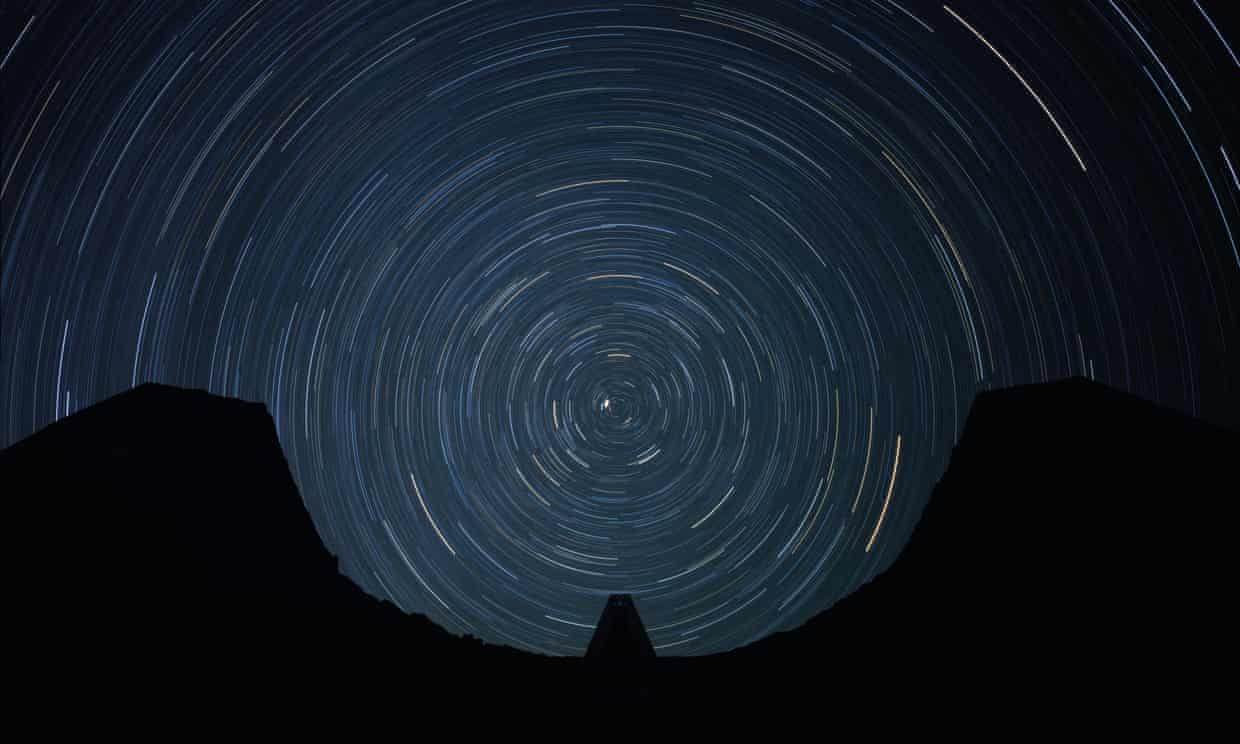
The view from Star Axis at night.
Ross prefers calling his work “Sky Art” rather than “Land Art.” We couldn’t agree more!
Image courtesy of: The Guardian
Ross hopes that “Star Axis” will be completed in 2022, when he turns 84. He is one of three remaining land artists who began enormous desert works forty years ago. Not surprisingly, there has always been some controversy behind these gargantuan works. Michael Govan, the Los Angeles County Museum of Art’s director said (courtesy of The New York Times Style Magazine), “People have dismissed the earthworks as monuments, but in fact, they’re critiques of the monumental.”
These works don’t pay the bills and Ross is lucky that Virginia Dwan has been his longtime patron. Dwan was one of the most influential galleries during the middle of the century, with galleries in both Los Angeles and New York. She quickly became repulsed by the art world’s commercialization. She turned to land art and started funding the unique art form. At the age of 88, the former gallery owner is still funding Ross’ “Star Axis.” She says (courtesy of The New York Times Style Magazine), “I had a unique connection to each of my artists, but there is something that is different with Charles. I can’t get up to see the site now, which is hard, but that they are so near to finishing gives me a great deal of happiness. The idea that it will be seen, that’s enough.”
